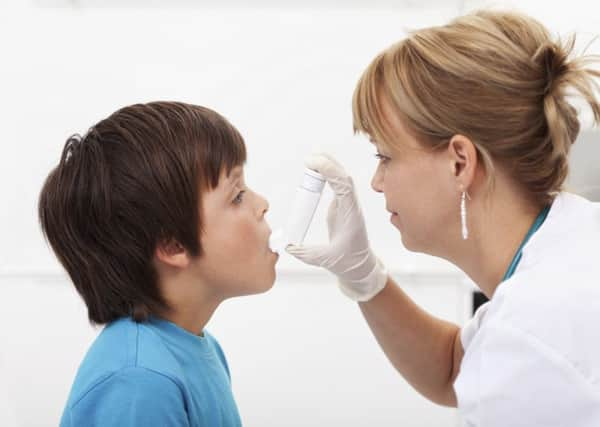Child asthma sufferers down by nearly a third


Improvements in air quality, diet and more careful diagnosis could be behind the decline revealed in the Aberdeen School Asthma Study, although researchers said that it was too early to tell whether there had been an impact from the smoking ban.
Whilst asthma rates have dropped sharply since a peak of almost 30 per cent in 2004 to 19 per cent in 2014, rates of hay fever and eczema in the same sample of children have stayed consistent over the same time period.
Advertisement
Hide AdAdvertisement
Hide AdAsthma is historically considered to be an allergic condition, but Aberdeen University researchers running the study said that if asthma rates were dropping and hay fever and eczema levels were not, then allergy may not be that important to asthma after all.
The study was first completed in 1964 and exactly the same questions have been answered by parents of children aged 9-12 attending the same city primary schools in 1989 and every five years since.
Dr Steve Turner, senior clinical lecturer in child health at Aberdeen University, said: “There are likely to be a number of contributing factors to the drop in instances of asthma among school children in Aberdeen, and indeed across Western Europe.
“Some of the apparent drop is down to more careful diagnoses being made nowadays. In years gone by, asthma was perhaps being diagnosed more freely than it ought to have been.
“There have also been clear changes in our environment –from diet, to the air we breathe. Some might even be tempted to say the smoking ban could be part of it, but we don’t know for certain.”
There are currently 368,000 people receiving treatment for asthma across Scotland, including 72,000 children.
The previous findings are known to act as an excellent barometer for asthma rates in children across Western Europe.
Professor Graham Devereux, professor of respiratory medicine at Aberdeen University, said: “Prevalence of asthma is down but is still nearly double the rate it was in 1989 (10.3 per cent) and is far higher than the rate recorded 50 years ago in the first study (4.1 per cent).
Advertisement
Hide AdAdvertisement
Hide Ad“These surveys have given us incredibly helpful insights to asthma prevalence in Aberdeen over the years. And if you plot that prevalence over time against other studies, asthma frequency elsewhere shadows that in Aberdeen with uncanny precision.”
Lorna Stevenson, respiratory coordinator at Chest Heart & Stroke Scotland (CHSS), which helped to fund the survey, said: “Whilst it’s good news that rates of asthma have fallen in the last ten years, nevertheless it’s important that teachers and the parents of children with asthma have a good understanding of the condition and how to keep children healthy and safe.
“CHSS is delighted to have funded this important study and we have recently launched a new website, www.mylungsmylife.org for people with COPD and asthma. This includes practical advice and information for the parents of children with asthma.”
The survey asks parents four simple questions to indicate if their child has suffered or does suffer from asthma, hay fever, eczema or wheeze.
The lastest study was made up of 3,935 surveys completed by parents of children aged primary five to primary seven at 41 schools across Aberdeen.
The results have formed the basis of a paper which has been published in the British Medical Journal Open.
Fifty years ago the initial survey was sent out to Aberdeen City schools with the chief aim of examining the impact on educational outcomes in primary school children. Some of the children involved in this latest survey will be the third generation of their family to take part.